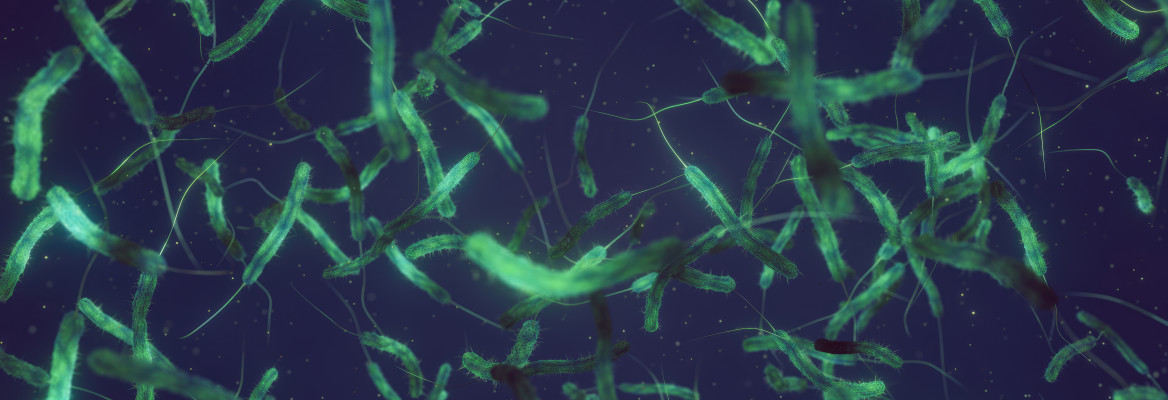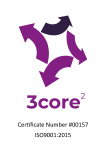
Harnessing bacteria’s potential: Cholera Toxin Products
Harnessing bacteria’s potential: Cholera Toxin Products
Cholera toxin is produced by Vibrio cholerae, a gram-negative bacterium, and is the main virulence factor in the development of cholera, a waterborne acute diarrheal disease. As a classic AB Type toxin, cholera toxin consists of a single A subunit surrounded by five identical B subunits, arranged as pentamer
- The A subunit is a potent activator of adenylate cyclase, triggering efflux of chloride ions through CFTR release of sodium ions and water from mucosal cells into the intestinal lumen, manifesting in symptoms of cholera.
- The B subunit (also known choleragenoid) is a non-toxic protein subunit, responsible for the binding of the holotoxin to GM1 ganglioside receptors on mammalian cell surfaces and facilitates entry of the A subunit into the cell.
Since initial discovery in 1959, Cholera toxin and its components have been widely used in biological research, leading to a development of specialised reagents to support neurological research, allergy and immunology research, vaccine R&D and drug development.
Neurological Research: Cholera toxin biological activity and mechanism of action are widely exploited for neural tracing models and neural pathway studies, supporting fundamental research into anatomical basis of motor control, sensory processing (nociception), and neurological disorders. Cholera toxin B (CTB) subunit provides a highly sensitive and reliable retrograde tracer, allowing researchers to track nerve pathways and map neuronal circuits in brain and spinal cord. CTB may also be used for tracing via anterograde transport from axons to the nerve cell body.
Immunology and Allergy Research: The potent immunomodulatory properties of cholera toxin and CTB subunit are utilised to study and enhance immune responses, particularly those originating at mucosal sites. The holotoxin’s ability to drive an increase in intracellular cAMP levels is employed in research into modulation of cell responses, including the suppression of Th2-related allergic sensitivities and the investigation of Th17 cell function in gut immunity and inflammation. CTB is widely used to induce oral tolerance, or sensitisation of immune system through oral delivery of an antigen, offering a therapeutic approach for autoimmune diseases and food allergies.
Vaccine R&D: acts as an effective mucosal adjuvant, significantly enhancing the immune response to co-administered antigens. It is widely used in oral vaccine strategies, where its ability to cross the mucosal barrier promotes a strong protective IgA response essential for protection against pathogens.
Drug Development: The high affinity of CTB binding to the GM1 ganglioside, which is enriched in lipid rafts, is exploited for targeted delivery and translational research into protein trafficking and cell signalling mechanisms.
INTERACTIVE GUIDE FOR LIST LABS’ CHOLERA TOXIN PRODUCTS
We are pleased to offer high purity and high potency Cholera Toxin Products from a leading manufacturer of high quality bacterial products, List Biological Laboratories.
| Product Name | Product Code | Product Description | Formulation | Select Applications |
|---|---|---|---|---|
| Cholera Toxin (Azide Free) | 100B | Holotoxin produced from Vibrio cholerae native fermentation, tested for low endotoxin and binding | Lyophilized in azide-free buffer (avoids toxicity concerns for in vitro and in vivo applications) | Mucosal adjuvant, signal transduction studies, cAMP activation and functional assays |
| Cholera Toxin B Subunit | 104 | Non-toxic B subunit purified by disassembly of holotoxin from native culture | Lyophilized in a low-salt buffer, providing greater flexibility in applications | Neural tracing, murine allergy models, mucosal adjuvant and immune system research |
| CTB Fluorescein Conjugate | 106 | B subunit chemically conjugated to Fluorescein Isothiocyanate (FITC) | Lyophilized, suitable as a sensitive fluorescent probe for detection | Fluorescence imaging of neurons and lipid rafts, flow cytometry, axonal tracing and neuronal connectivity |
| CTB Biotin Conjugate | 112 | B subunit chemically conjugated to Biotin | Lyophilized, biotin conjugated for high-affinity detection | High-affinity cytochemistry for microscopy, axoplasmic transport and neuronal connectivity studies |
| Anti-CTB Antibody (Goat) | 703 | High-titer polyclonal antibody raised in Goat, tested for reactivity to CTB | Lyophilized powder, containing 0.1% NaN3 as a preservative |
Used with CTB for visualisation of neurons (microscopy, immunohistochemistry), toxin neutralisation and binding assays |


